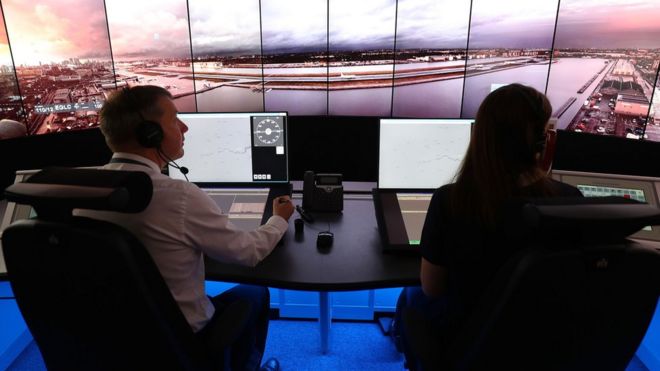
London City is on its way to become the very first airport in Britain to be equipped with a remote air-controlling staff.
Starting from 2019, the pilots using Docklands airport would be supervised by staff members who would be based 80 miles away, in the region of rural Hampshire. The airport authorities said that their eyes would be on the skies to a remote locale and this technology is expected to make the concept of flying safer.
Declan Collier who is the London City chief executive said that the air passengers would not notice anything different as a result of this technology and that it would improve the airline operations considerably.
He added that this plan would bring about a brand new standard for the global aviation industry.
The system would employ the same number of air controllers as are currently employed. But then, they would be located in a ‘virtual’ tower in the NATS air-traffic headquarters at Swanwick in Hampshire. At the airport, a new high-tech 50-metre tower enriched with 14 high-definition cameras as well as two ultra-powerful zoom camera would be erected inside a long-stay car park adjacent to the runway.
Last year, this concept was trialled by the Irish Aviation Authority and the aircraft at Cork and Shannon dealt with the controllers in Dublin.
These techniques are clearly utilized in northern Scandinavia but then the airports are far less busy s compared to London City that has about 280 movements on a typical day. The director of airports at NATS named Mike Stoller said that digital towers are believed to have the potential to transform the way air traffic services are offered at airports by offering operational and real safety benefits.
Highland and Island Airports (HIAL) is trying to replace air-traffic controllers at 11 of its airports with a centrally controlled remote tower system in Inverness.